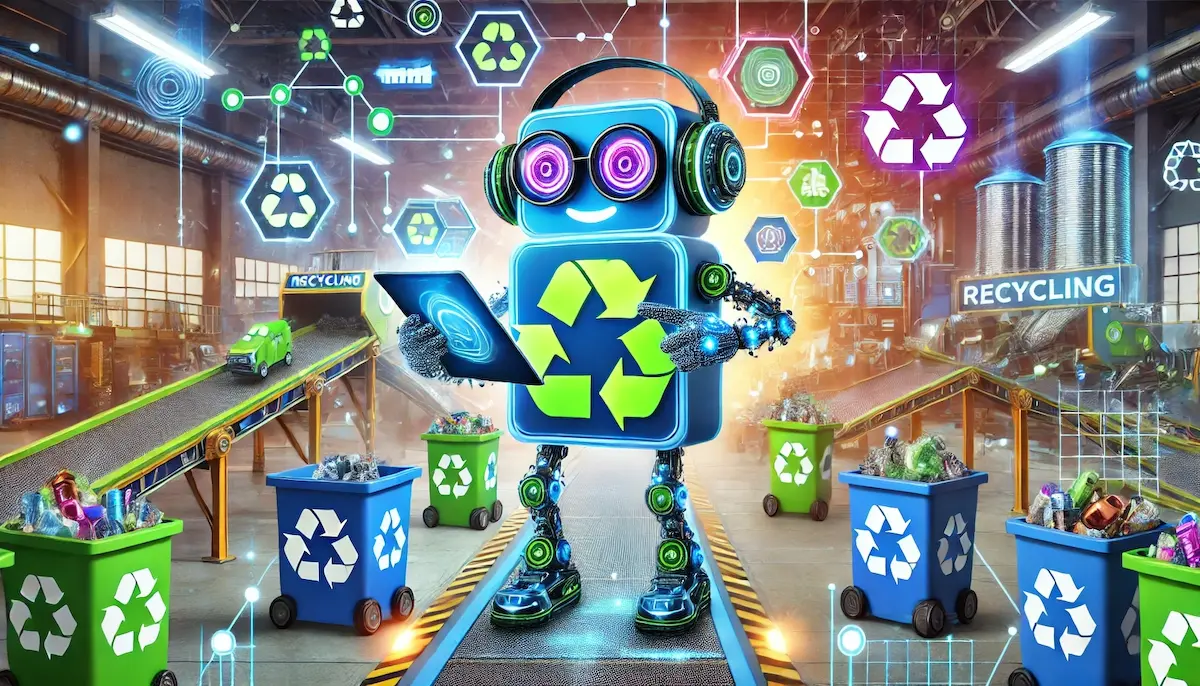Recycling technology refers to the various methods and processes used to convert waste materials into reusable resources. These technologies play a critical role in reducing waste, conserving natural resources, and minimizing environmental impact. With advancements in recycling technology, the efficiency and scope of recycling efforts continue to expand, making it possible to process a wider range of materials more effectively.
What is Recycling Technology?
Recycling technology encompasses the tools, machinery, and processes used to collect, sort, process, and repurpose waste materials. The goal is to recover valuable resources from waste, thereby reducing the need for new raw materials and decreasing the volume of waste sent to landfills and incinerators. This technology includes mechanical, chemical, and biological methods to handle various types of waste.
Key Types of Recycling Technologies
Mechanical Recycling
Mechanical recycling involves the physical processing of waste materials to recover valuable components. This method is commonly used for materials like plastics, metals, paper, and glass.
- Plastic Recycling: Plastics are sorted by type, cleaned, shredded into flakes, and melted to form new products or raw materials.
- Metal Recycling: Metals are sorted, cleaned, melted, and reformed into new metal products. This process is highly efficient and reduces the need for mining new metals.
- Paper Recycling: Paper is collected, sorted, cleaned, and pulped to remove inks and contaminants. The pulp is then used to produce new paper products.
- Glass Recycling: Glass is sorted by color, cleaned, crushed, and melted to create new glass products. This process can be repeated indefinitely without degrading the quality of the glass.
Chemical Recycling
Chemical recycling involves breaking down waste materials into their chemical components to produce new materials or fuels. This method is particularly useful for materials that are difficult to recycle mechanically.
- Plastic Depolymerization: Plastics are chemically broken down into their monomers, which can be repolymerized to create new plastics.
- Pyrolysis: Organic materials, such as plastics and biomass, are heated in the absence of oxygen to produce oil, gas, and char. These products can be used as fuels or raw materials for chemical manufacturing.
- Solvolysis: Solvents are used to dissolve and separate the components of composite materials, enabling the recovery of individual constituents for reuse.
Biological Recycling
Biological recycling uses natural processes and organisms to break down organic waste materials into useful products.
- Composting: Organic waste, such as food scraps and yard waste, is decomposed by microorganisms to produce nutrient-rich compost that can be used to improve soil health.
- Anaerobic Digestion: Organic waste is broken down by bacteria in the absence of oxygen, producing biogas (a renewable energy source) and digestate (a nutrient-rich fertilizer).
- Bioremediation: Microorganisms are used to detoxify and decompose hazardous waste materials, such as oil spills and contaminated soil.
Advanced Sorting Technologies
Efficient recycling relies on advanced sorting technologies to separate different types of waste materials accurately.
- Optical Sorting: Uses light and sensors to identify and separate materials based on their optical properties, such as color and transparency.
- Magnetic Separation: Uses magnets to separate ferrous metals (iron and steel) from other waste materials.
- Eddy Current Separation: Uses magnetic fields to separate non-ferrous metals (such as aluminum and copper) from other materials.
- Near-Infrared (NIR) Sorting: Uses near-infrared light to identify and separate plastics based on their chemical composition.
Benefits of Recycling Technology
Resource Conservation
Recycling technology helps conserve natural resources by recovering valuable materials from waste. This reduces the need for mining, logging, and other resource-intensive activities, preserving ecosystems and biodiversity.
Energy Savings
Recycling often requires less energy than producing new materials from raw resources. For example, recycling aluminum saves up to 95% of the energy needed to produce new aluminum from bauxite ore. These energy savings translate into reduced greenhouse gas emissions.
Waste Reduction
By diverting waste from landfills and incinerators, recycling technology helps reduce the volume of waste and the associated environmental impacts. This extends the lifespan of landfill sites and decreases the pollution caused by waste disposal.
Economic Benefits
Recycling creates jobs in collection, sorting, processing, and manufacturing industries. It also provides economic opportunities for businesses to develop new products from recycled materials, driving innovation and growth in the green economy.
Environmental Protection
Recycling reduces pollution by decreasing the need for new resource extraction and minimizing the release of harmful substances into the environment. It also helps mitigate climate change by lowering greenhouse gas emissions associated with material production.
Challenges and Future Outlook
Despite its many benefits, recycling technology faces challenges such as contamination of recyclable materials, high costs of advanced recycling processes, and the need for improved infrastructure and public awareness. However, ongoing research and development are driving innovations that address these challenges and enhance the efficiency and effectiveness of recycling efforts.
The future of recycling technology looks promising, with advancements such as artificial intelligence, robotics, and blockchain expected to revolutionize waste management. These technologies will enable more precise sorting, tracking of materials, and optimization of recycling processes, making it possible to recycle a broader range of materials more sustainably.
Blockfine thanks you for reading and hopes you found this article helpful.
